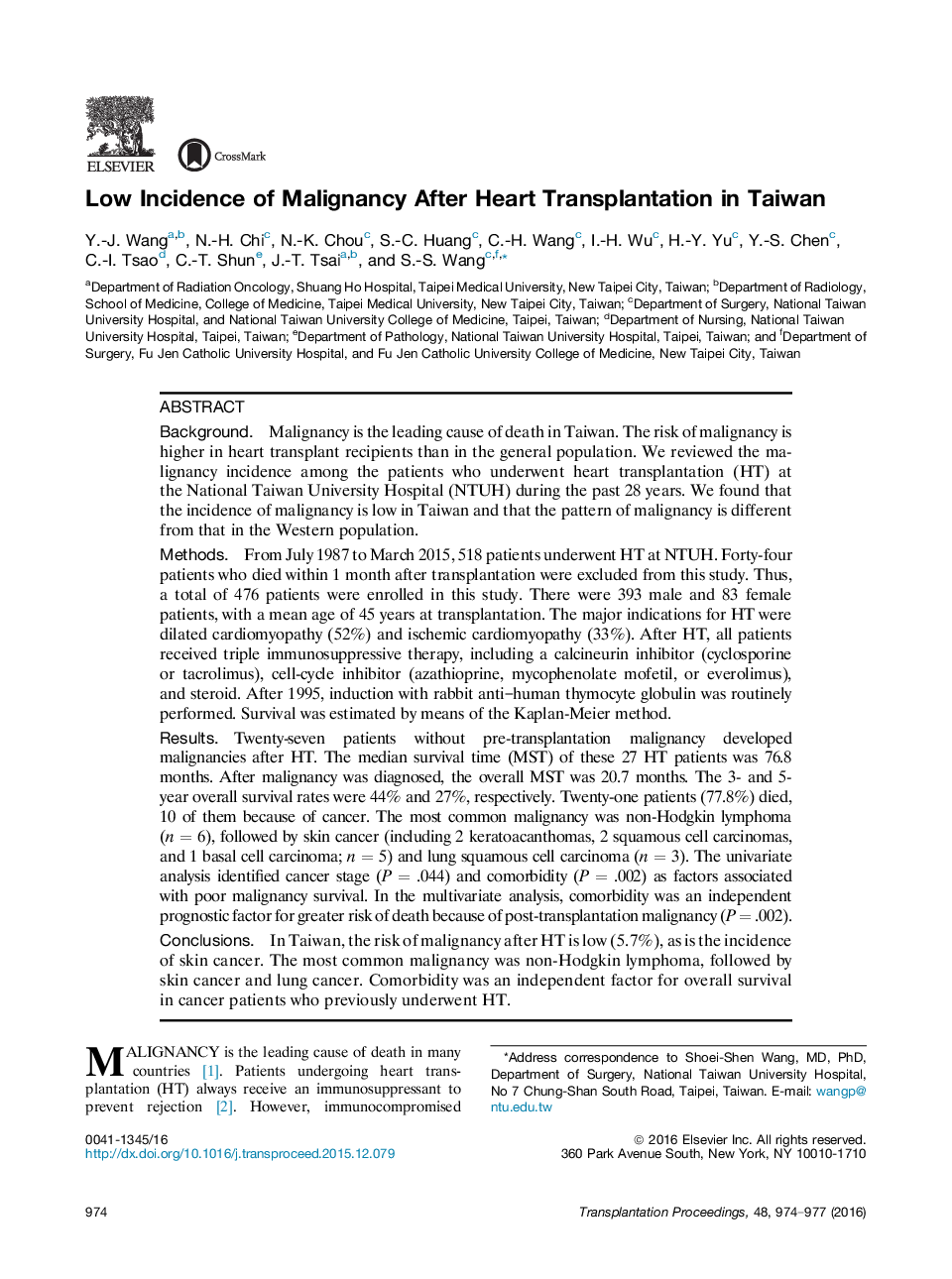| کد مقاله | کد نشریه | سال انتشار | مقاله انگلیسی | نسخه تمام متن |
|---|---|---|---|---|
| 6246486 | 1284493 | 2016 | 4 صفحه PDF | دانلود رایگان |
- In Taiwan, the risk of malignancy after HT is low (5.7%).
- The 3- and 5-year overall survival rates after malignancy were 44% and 27%, respectively.
- Comorbidity is an independent factor for overall survival in cancer patients who previously underwent HT.
BackgroundMalignancy is the leading cause of death in Taiwan. The risk of malignancy is higher in heart transplant recipients than in the general population. We reviewed the malignancy incidence among the patients who underwent heart transplantation (HT) at the National Taiwan University Hospital (NTUH) during the past 28 years. We found that the incidence of malignancy is low in Taiwan and that the pattern of malignancy is different from that in the Western population.MethodsFrom July 1987 to March 2015, 518 patients underwent HT at NTUH. Forty-four patients who died within 1 month after transplantation were excluded from this study. Thus, a total of 476 patients were enrolled in this study. There were 393 male and 83 female patients, with a mean age of 45 years at transplantation. The major indications for HT were dilated cardiomyopathy (52%) and ischemic cardiomyopathy (33%). After HT, all patients received triple immunosuppressive therapy, including a calcineurin inhibitor (cyclosporine or tacrolimus), cell-cycle inhibitor (azathioprine, mycophenolate mofetil, or everolimus), and steroid. After 1995, induction with rabbit anti-human thymocyte globulin was routinely performed. Survival was estimated by means of the Kaplan-Meier method.ResultsTwenty-seven patients without pre-transplantation malignancy developed malignancies after HT. The median survival time (MST) of these 27 HT patients was 76.8 months. After malignancy was diagnosed, the overall MST was 20.7 months. The 3- and 5-year overall survival rates were 44% and 27%, respectively. Twenty-one patients (77.8%) died, 10 of them because of cancer. The most common malignancy was non-Hodgkin lymphoma (n = 6), followed by skin cancer (including 2 keratoacanthomas, 2 squamous cell carcinomas, and 1 basal cell carcinoma; n = 5) and lung squamous cell carcinoma (n = 3). The univariate analysis identified cancer stage (P = .044) and comorbidity (P = .002) as factors associated with poor malignancy survival. In the multivariate analysis, comorbidity was an independent prognostic factor for greater risk of death because of post-transplantation malignancy (P = .002).ConclusionsIn Taiwan, the risk of malignancy after HT is low (5.7%), as is the incidence of skin cancer. The most common malignancy was non-Hodgkin lymphoma, followed by skin cancer and lung cancer. Comorbidity was an independent factor for overall survival in cancer patients who previously underwent HT.
Journal: Transplantation Proceedings - Volume 48, Issue 3, April 2016, Pages 974-977
